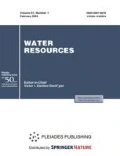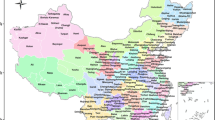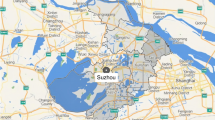Abstract
Dongying City is located in the northeast of Shandong Province and is the central city of the Yellow River Delta. It has abundant oil and gas resources, vast saline-alkali land area, and saline brine as the main groundwater. Therefore, freshwater resources are poor, as there is a contradiction in the water supply and its demand. Judging the trend of sustainable utilization of water resources in Dongying City has an important role in promoting the local conservation and exploitation of water resources, recycling water resources, and undermining the contradiction between supply and demand of urban water resources. In this paper, 21 indicators have been selected to build the index system for judging the sustainable utilization of water resources. In addition, the DPSIR model is used to evaluate the sustainable utilization trend of water resources in Dongying City from 2005 through 2017. On the other hand, the GM (1, 1) model is considered to predict the sustainable potential-utilization of water resources in Dongying City from 2019 through 2025. The results demonstrated that the sustainable utilization of water resources in Dongying City shows an increasing trend from 2005 to 2017, So that the highest and lowest values are in 2017 and 2005, respectively. In addition, the sustainable potential-utilization of water resources in Dongying City may indicate a continuous upward trend from 2019 through 2025. Rainfall, runoff of the Yellow River and water resources per capita are the main factors affecting the sustainable utilization of water resources. According to the continuous improvement of residents' awareness of water saving and water-saving level, the development and exploitation of water resources will be more and more reasonable.

Similar content being viewed by others
REFERENCES
Arfanuzzaman, M. and Rahman, A.A., Sustainable water demand management in the face of rapid urbanization and ground water depletion for social-ecological resilience building, Global Ecol. Conserv., 2017, vol. 10, pp. 9–22.
Bian, J.M. and Yang, J.Q., Comprehensive evaluation index system and application of sustainable utilization of water resources, Bull. Soil and Water Conserv., 2000, vol. 20, no. 4, pp. 43–45.
Bijl, D.L., Bogaart, P.W., Kram, T., et al., Long-term water demand for electricity, industry and households, Environ. Sci. Policy, 2016, vol. 55, pp. 75–86.
Cao, Q.W., Bao, C., Gu, C.L., et al., China’s urbanization SD modelling and simulation based on water resource constraints, Geograph. Res., 2019, vol. 38, no. 1, pp. 167–180.
Cui, W.D. and Guo, R., Evaluation of sustainable utilization of regional water resources based on GRNN neural network model: case of Wenshan Prefecture of Yunnan Province, J. Yangtze Riv., 2012, vol. 4, no. 5, pp. 26–31.
De Vellis R.F., Scale Development Theory and Applications [M], London: Sage, 1991.
Fouadn Imrahim, Sustainable Water Utilization in Northern DARFITRSUDAN, Univ. Bayreutb, 1995, pp. 141–145.
Gao, B., Application of DPSIR Framework in the Evaluation of Sustainable Water Use in Northwest China, Xian: Northwestern Polytechnical Univ., 2007, pp. 23–35.
Jin, J.L., Hong, T.Q., and Wang, W.S., Entropy and FAHP based fuzzy comprehensive evaluation model of water resources sustaining utilization, J. Hydroel. Eng., 2007, vol. 26, no. 4, pp. 22–28.
Juwana, I., Muttil, N., and Perera, B.J.C., Indicator-based water sustainability assessment—A review, Sci. Total Environ., 2012, vol. 438, pp. 357–371.
Kondratyev, S., Gronskaya, T., Ignatieva, N., et al., Assessment of present state of water resources of Lake Ladoga and its drainage basin using Sustainable Development indicators, Ecol. Indic., 2002, vol. 2, pp. 79–92.
Kuylenstierna, J.L., Bjoklund, G., and Najlis, P., Future sustainable water use: challenges and constraints, J. Soil Water Conserv., 1997, pp. 151–156.
Lai, D., Qin, H., and Zheng, C., Scenario analysis of water resources utilization in North China Plain based on MIKE SHE model, J. Water Res. Water Eng., 2018, vol. 29, no. 05, pp. 60–67.
Li, F., Chen, Y.N., Li, W.H., et al., The application of set pair analysis based on entropy weight to evaluation of sustainable water resources utilization–a case study in the three sources of Tarim River, J. Glaciol. Geocryol., 2010, vol. 32, no. 4, pp. 723–730.
Li, T.X., Fu, Q., and Peng, S.M., Evaluation of water and soil resources carrying capacity based on DPSIR frame work, J. Northeast. Agric. Univ., 2012, vol. 43, no. 8, pp. 128–134.
Liu, S.F., Grey System Theory and Its Application, Beijing: Sci. Press, 2008, pp. 69–130.
Liu, Y., Jia, R.X., and Hou, X.L., Evaluation of China’s Regional Sustainable Utilization of Water Resources and Its Type Classification, Environ. Sci., 2005, vol. 26, no. 1, pp. 42–46.
Michiel, A., Rijsberman, F., and van de Ven, H.M., Different approaches to assessment of design and management of sustainable urban water systems, Environ. Impact Assess. Rev., 2000, vol. 20, pp. 333–345.
Ouyang, Z.P., Jin, M.G., and Liu, Y.F., Evaluation of Xinjiang Yanqi Basin water resources sustainable utilization, Yellow River, 2007, vol. 29, no. 11, pp. 50–51.
Shahanas, K.M. and Sivakumar, P.B., Framework for a smart water management system in the context of smart city initiatives in India, Procedia Comp. Sci., 2016, vol. 92, pp. 142–147.
Shu, Y.Y., Zhou, W.B., Liu, L., et al., Research on evaluation of sustainable utilization of water resources in Yan’an based on fuzzy four-element connection coefficient, J. Water Resour. Water Engin., 2013, vol. 24, no. 4, pp. 66–70.
Song, S.B. and Cai, H.J., Comprehensive assessment method for region sustainable water resources, Adv. Water Sci., 2005, vol. 16, no. 2, pp. 244–249.
UNESCO, WMO, Water Resources Assessment Activities: Handbook. For Nation Evaluation, Geneva: WMO secretariat, 1998.
Wang, F., Wang, S., and Prominski, M., Water-related urbanization and locality: Protection and utilization of water environment as well as planning and design of water space in a sustainable perspective, Geograph. Res., 2018, vol. 37, no. 12, pp. 2576–2584.
Wang, S.J. and Yang, Z.F., A projection pursuit model for comprehensive assessment on eco-environmental quality of regional agriculture, Chin. J. Eco-Agric., 2006, vol. 14, no. 1, pp. 173–175.
Xu, J.H., Mathematical Methods in Contemporary Geography, Beijing: Higher Education Press, 2002, pp. 120–134.
Xu, L.F., Feng, G.Z., and Liu, J.M., Sustainable utilization and evaluation index system for regional water resources, J. Northwest Agric. Forest. Univ.: Natural Sci. Edition, 2002, vol. 30, no. 2, pp. 119–122.
Xu, W.H., Yu, F.L., and Long, A.H., Fuzzy Matter-element Model Based on Entropy Weight for Evaluating Sustainable Utilization of Regional Water Resources, China Popul., Resour. Environ., 2010, vol. 20, no. 5, pp. 157–160.
Xu, Y.T., Feng, H.X., Wu, Y.F., et al., The characters of water resources and countermeasures of sustainable utilization in Jinan section of the Yellow River, J. Nat. Resour., 2001, vol. 16, no. 2, pp. 128–133.
Zhuo, F.B. and Chen, X.W., Evaluation of Water resources in Fujian province based on the osculation value method, Res. Soil and Water Conserv., 2008, vol. 15, no. 1, pp. 179–181.
Zou, J., Comprehensive evaluation of sustainable water resources utilization of Hunan Province, Water Saving Irrig., 2007, vol. 2, pp. 18–21.
Zou, J., Liu, Z.W., Zhang, X.F., et al., Evaluation index system and sustainable utilization of regional water resources, J. Arid Land Resour. Environ., 2003, vol. 17, no. 1, pp. 37–40.
Funding
This study was supported by the General Program of National Natural Science Foundation of China (41 371 537) and the Key Program of Social Science Planning of Shandong Province (18BJJJ05).
Author information
Authors and Affiliations
Corresponding authors
Rights and permissions
About this article
Cite this article
Bin Pan, Han, M., Li, Y. et al. An Analysis on the Trend of Sustainable Utilization of Water Resources in Dongying City, China. Water Resour 48, 158–166 (2021). https://doi.org/10.1134/S009780782101022X
Received:
Revised:
Accepted:
Published:
Issue Date:
DOI: https://doi.org/10.1134/S009780782101022X




